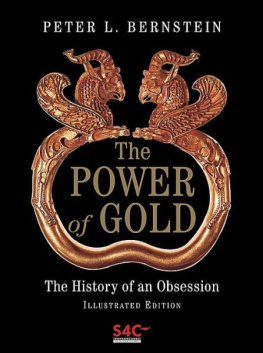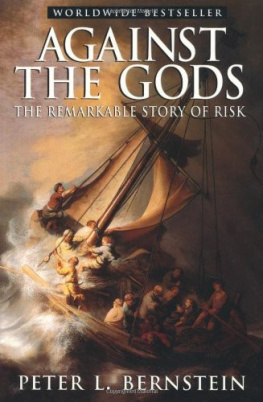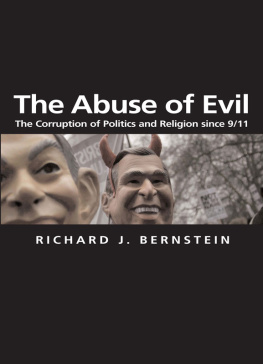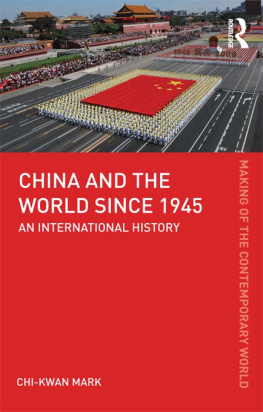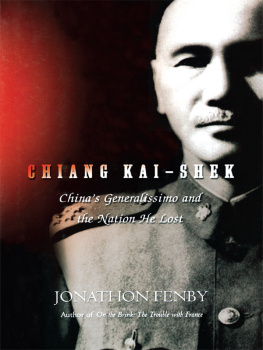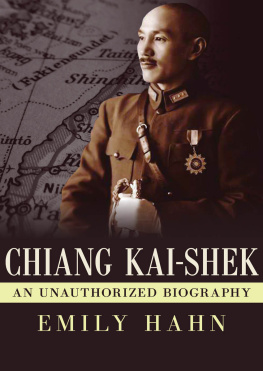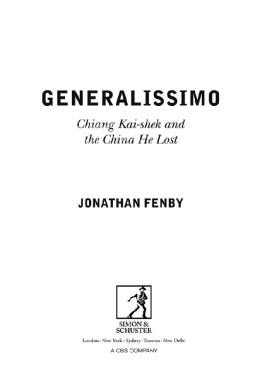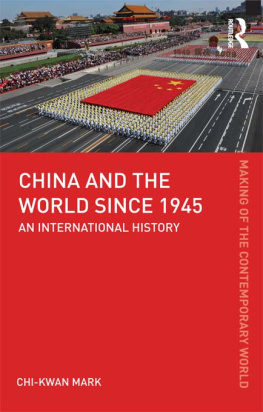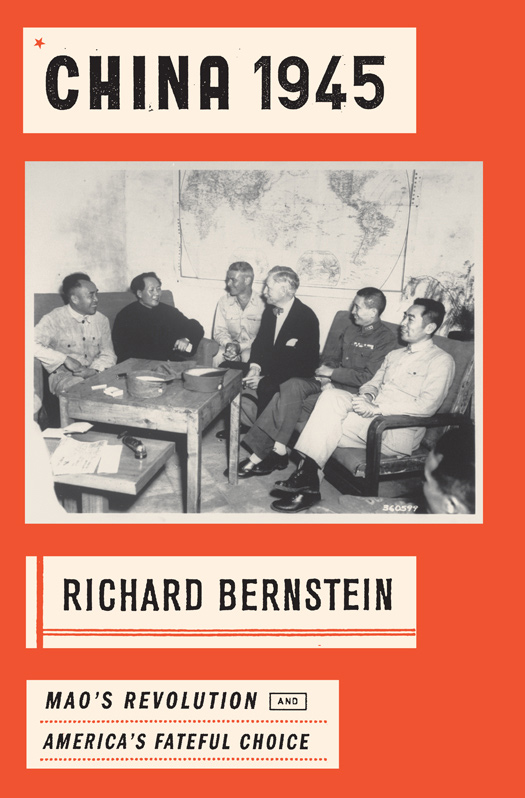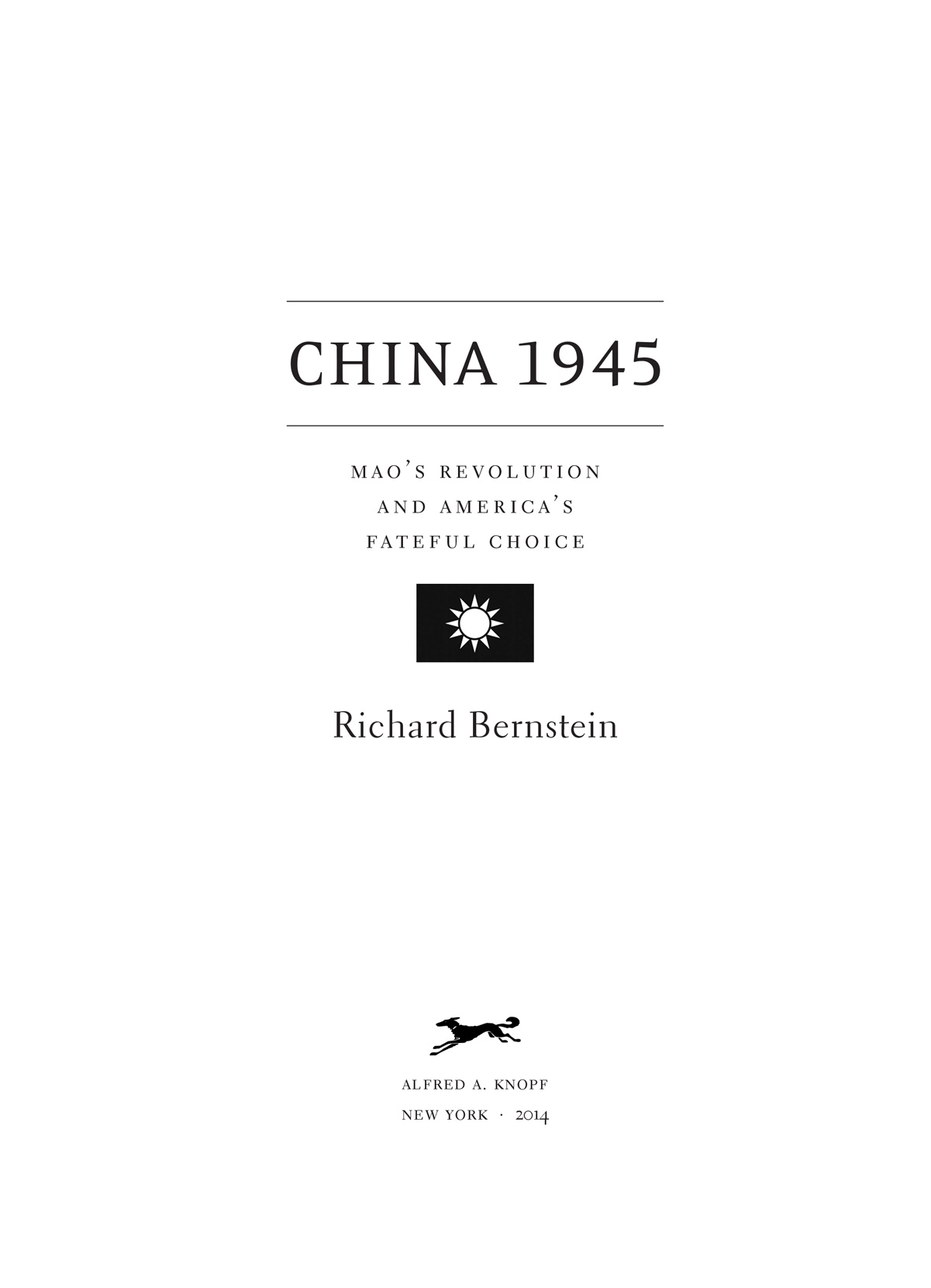THIS IS A BORZOI BOOK PUBLISHED BY ALFRED A. KNOPF
Copyright 2014 by Richard Bernstein
All rights reserved. Published in the United States by Alfred A. Knopf, a division of Random House LLC, New York, and in Canada by Random House of Canada Limited, Toronto, Penguin Random House companies.
www.aaknopf.com
Knopf, Borzoi Books, and the colophon are registered trademarks of Random House LLC.
Library of Congress Cataloging-in-Publication Data
Bernstein, Richard, [date]
China 1945 : Maos revolution and Americas fateful choice / Richard Bernstein. First edition.
pages cm.
Includes bibliographical references and index.
ISBN 978-0-307-59588-1 (hardcover) ISBN 978-0-385-35351-9 (eBook)
1. United StatesForeign relationsChina. 2. ChinaForeign relationsUnited States. 3. ChinaHistoryRepublic, 19121949. 4. TaiwanHistory1945 5. Mao, Zedong, 18931976. 6. Chiang, Kai-shek, 18871975. I. Title.
E183.8.C5B439 2014
327.7305109044dc23
2014003598
Front-of-jacket photograph: Conference at Yenan Communist Headquarters with Chairman Mao Zedong, August 27, 1945. Photo by Frayne / U.S. Army / National Archives / Time & Life Pictures / Getty Images.
Jacket design by Oliver Munday
Maps by Mapping Specialists, Ltd.
v3.1_r2
TO THE MEMORY OF
Clare Bernstein
ALSO BY RICHARD BERNSTEIN
The East, the West, and Sex:
A History of Erotic Encounters
Out of the Blue: A Narrative of September 11, 2001
Ultimate Journey: Retracing the Path of an Ancient Buddhist
Monk Who Crossed Asia in Search of Enlightenment
The Coming Conflict with China (with Ross H. Munro)
Dictatorship of Virtue: Multiculturalism
and the Battle for Americas Future
Fragile Glory: A Portrait of France and the French
From the Center of the Earth:
The Search for the Truth About China
For children
A Girl Named Faithful Plum: The True Story of a Dancer
from China and How She Achieved Her Dream
For men change their rulers willingly hoping to better themselves, and this hope induces them to take up arms against him who rules: wherein they are deceived, because they afterwards find by experience they have gone from bad to worse.
Niccol Machiavelli
The whole state apparatus, including the army, the police, and the courts, is the instrument by which one class oppresses another it is violence and not benevolence.
Mao Zedong
Contents
A Note on Chinese Names and Places
T ranscribing names of Chinese people and places is complex, because of the multiple ways in which it has been done over the years, and because some names have changed since the period covered in this book. For place-names, I have mostly used the names that were employed in 1945, and if the name used today is different, I show that in parenthesis after the first mention. The two main instances of this are Mukden, the largest city in Manchuria, which is now known as Shenyang, and Chefoo, present-day Yentai. An exception is Beijing, which means northern capital. In 1945, the city was known as Peiping, meaning northern peace. But I render it as Beijing, in the way that has become generally accepted today.
In 1945, the main system used for transcribing Chinese names into the Latin alphabet was called Wade-Giles, and it decreed, for example, that the leader of Chinas Communist Party was Mao Tse-tung. But since coming to power, the Communists have adopted an alternative system, known as pinyin, by which the aforementioned name is rendered Mao Zedong, and for most names, including Maos, this book follows the pinyin system currently in use. However in the case of Kuomintang officials, I use the Wade-Giles system still in use on Taiwan. Thus, I refer to the Kuomintang official who negotiated the ceasefire of January 1946 as Chang Chun. The pinyin spelling would be Zhang Chun. The Kuomintang itself would be Guomindang, or GMD, in pinyin, but I have used the old romanizationKuomintang, or KMT.
Finally, a small number of the names are rendered in a way that does not correspond either to pinyin or Wade-Giles but is still so familiar that it would be confusing to abandon it. The chief example is the Nationalist leader Chiang Kai-shek. In pinyin his name would be Jiang Jieshi, but his name is rendered as Chiang Kai-shek in this book. The names of several Chinese cities are similarly renderedhence Canton (rather than the pinyin: Guangzhou) and Chungking (pinyin: Chongqing).
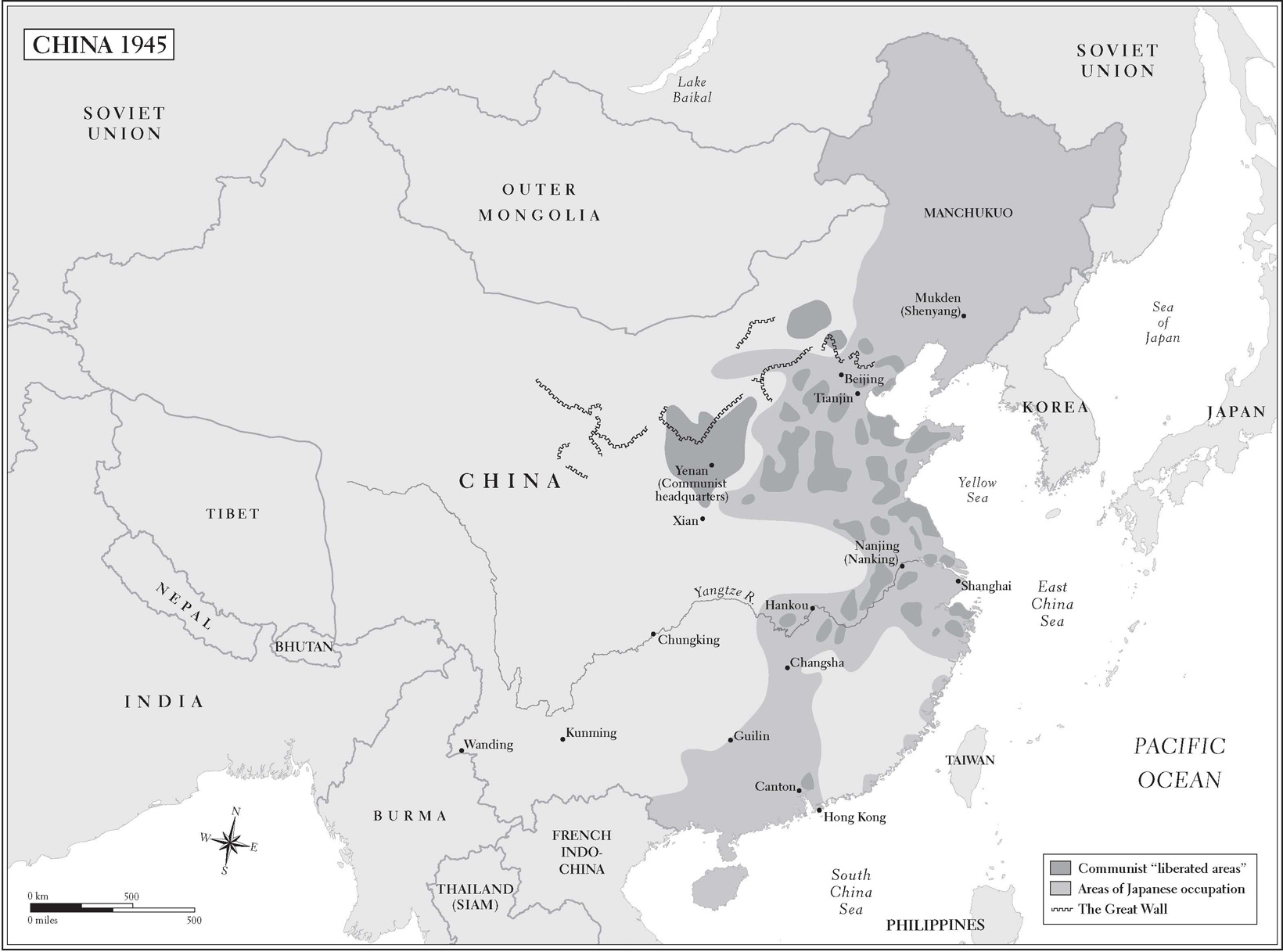

Introduction
N ear the end of 2013, something new made its presence known in the waters off the coast of China. It was an aircraft carrier, bought from Ukraine and refurbished in the port of Qingdao. Called the Liaoning , it was Chinas first-ever such craft and therefore, while not nearly as swift or powerful as the American colossi that patrol the worlds oceans, a sign of Chinas growing power and, more important, of its intention to project that power well beyond its shores.
Naturally, this was of interest to the United States, which dispatched ships of its own to observe the Liaoning as it sailed with its escort of destroyers and cruisers in international waters. When one of the American ships, a guided missile carrier known as the Cowpens , almost collided with a Chinese vessel that cut closely and aggressively across its bow, there was angry comment on both sides.
The American secretary of defense called Chinas action irresponsible. China, through its controlled press, declared that the Cowpens had intruded into a no sail zone declared by China in the South China Sea, virtually all of which China claims to control, though that claim is not accepted by the United States or by other countries in Asia. The newspaper Global Times , an English-language mouthpiece for Chinas ministry of propaganda, warned that China had a right to defend its territory, and just because it wasnt capable of asserting its interest in the past doesnt mean it has given up this right.
There were other high-seas confrontations between China and the United States in the early years of the twenty-first century, as China indicated an intention over the long run to supplant the United States as the dominant power in East Asia and the western Pacific.
But for the historian what is striking about the newest phase of Sino-American relations is how closely it echoes the past, particularly actions undertaken by earlier Chinese Communist forces to warn the United States away, to stop it from exercising what it assumed to be its paramount power in Asia. The most important and best-known of these actions took place during the Korean War in 1950, when, for the first and, so far, only time, China and America engaged in large-scale hostilities. But the first armed standoff between the United States and the Communist Chinese took place five years earlier than that along a dusty, tree-lined road between the Chinese port of Tianjin and the ancient imperial capital, Beijing (then known as Peiping) that was being patrolled by detachments of United States Marines.


